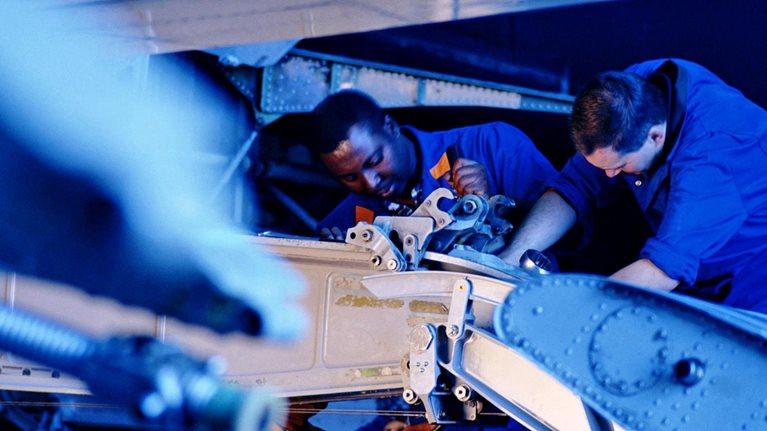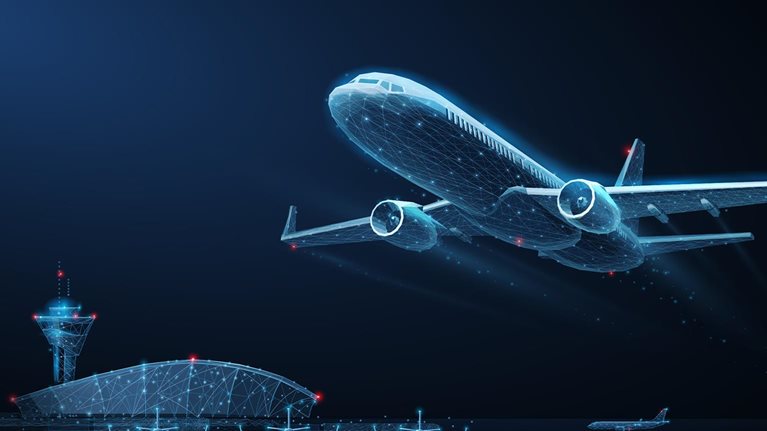Today’s airports can look sleek and modern, with convenient self-check-in kiosks and eye-catching digital signage. But that traveler-facing technology doesn’t always tell the whole story. Behind the scenes, airport infrastructure technology (infratech) is often outdated. It might be hampered by legacy software systems, scattered data, and stalled infratech projects that seem forever stuck in pilot mode. While many airports harbor grand ambitions for digital transformation, few are capturing measurable results.
McKinsey conducted individual interviews about digital transformation efforts with more than 20 senior executives at airports across the Asia–Pacific, Europe, the Middle East, and North America—ranging from regional hubs to global destinations—to better understand what’s working, what’s not, and how infratech is getting used on the ground. This research informed the creation of a maturity benchmark that assesses airports’ progress in implementing important core technologies, including AI, digital twins, and predictive maintenance. The resulting findings suggest that when it comes to airport infratech, there’s much enthusiasm for experimentation, coupled with much untapped potential (Exhibit 1).

Which tech use cases are showing the most promise for airports? What headwinds can hold back progress? What are pioneering airports doing better than others? This article endeavors to answer these questions and provide any airport operator with a preflight checklist that can help prepare the way for digital takeoff.
Updating airport infrastructure technology can help returns soar

McKinsey analysis indicates that airports using the right technologies in the right way can boost EBITDA by 6 to 8 percent, with a considerable portion of this gain achievable within just a few years (Exhibit 2). Many of the initiatives that can help produce these results aren’t moonshots. They’re practical, tested solutions that are already making a difference in some advanced air hubs:
- AI to plan capacity and manage flows in real time: When planning is left to legacy software systems that rely on isolated data, the results can be bottlenecks at boarding and security checkpoints, inefficient deployment of staff to the wrong areas at the wrong times, and long passenger lines. Improved infratech powered by AI algorithms that rely on comprehensive data sets can execute real-time reallocation of check-in counters, gates, and workforces based on actual passenger flows, thereby minimizing delays and improving traveler experiences.
- Predictive maintenance to cut costs and avoid disruptions: A reactive maintenance strategy in which repairs come only in response to breakdowns can lead to more frequent (and more expensive) equipment failures. This sometimes results in unplanned downtime of critical infrastructure. Digital updates can enable predictive-maintenance systems that use sensors placed on high-use components—such as baggage belts, escalators, and parts in heating, ventilation, and air-conditioning (HVAC) systems—to anticipate impending equipment issues in advance of failure, create more efficient maintenance schedules, and minimize disruptions to operations.
- Automated gates and smart baggage systems to speed traveler journeys: Manual processes at bag check stations and boarding gates can lead to lost bags, missed connections, and staff overload during peak hours. Switching to automated bag tracking and self-service gates can help enable faster boarding, fewer errors, shorter queues, and smoother handoffs.
- Digital twins to coordinate operations and reduce energy use: With no clear overview of how systems are interacting, airports can suffer from siloed operations, unpredictable effects from disruptions, and inefficient energy use across terminals. Digital twins are virtual replicas that use sensor data to monitor conditions and provide real-time simulations. They can enable smarter decisions—on issues from gate allocations to HVAC adjustments—that flow from a high-level, holistic approach. A unified view provided by a digital twin could, for instance, automatically trigger the opening of overflow security lanes or boarding areas based on passenger flows.
These aren’t “nice to have” features. They’re becoming the baseline for competitiveness in an industry where margins are tight and expectations are high.
Common challenges leave some airports stuck at the gate
The potential for digital transformation is evident, and enthusiasm for experimentation is widespread. But scaling such a transformation across an airport is rarely straightforward. Some frequently present challenges often need to be overcome:
- Fragmented data: Most airports still operate with disconnected systems across airlines, baggage handling, operations, and passenger services. Data gets trapped in silos or isn’t easily translated from one system to another. Without shared, real-time data, teams are left reacting instead of anticipating. But when data flows smoothly across systems, airports can forecast demand spikes, adjust staffing in real time, and reroute passenger flows before congestion happens.
- Constrained budgets: Many airports, especially in smaller municipalities or regional hubs, simply don’t have the resources to roll out large-scale tech programs. When budgets are stretched, even proven solutions can get postponed in favor of urgent maintenance or compliance investments. By starting with low-cost initiatives (such as adding Internet of Things sensors that detect anomalies in baggage and HVAC systems), even if a full predictive-maintenance platform hasn’t yet been implemented, airports can offer proof of concept. The resulting reductions in downtime and maintenance costs can help build business cases for later, more ambitious upgrades.
- Complex stakeholder coordination: Airports are complicated ecosystems. Any reactive change often requires alignment across airlines, airport staff, handlers, and regulators. Shared data platforms and collaborative decision-making tools can align actions in real time. This can accelerate operations, reduce miscommunication, and allow faster recoveries from disruptions. For example, an update about a delayed aircraft arrival that’s simultaneously shared with all stakeholders could trigger synchronized changes to baggage routing, gate allocation, and staffing—avoiding the inefficient ripple effect that can occur when reactions to disruption are uncoordinated.
- Unclear path from pilot project to scaled solution: Many airports run interesting pilot projects, but few manage to turn these experiments into operational standards. Without a focused digital strategy, initiatives can remain isolated and short lived. A plan that includes clear investment thresholds and scaling criteria can help quickly identify what works and replicate it with confidence. Instead of testing five different AI tools, for instance, an airport can define a short list of must-have use cases for AI and then scale the best-performing tool (based on those criteria) across all terminals within 12 months.
These barriers can prevent experimentation from evolving into transformation. In a competitive environment, staying in pilot mode means falling behind.
Leading airports are already moving down the runway
Some airports have gone beyond trying out new technology and have transitioned to using it to solve real problems. They tend to share a few common approaches:
- Begin the process by focusing on outcomes (such as capacity, costs, and passenger satisfaction) instead of getting lost in the tech weeds.
- Identify a few crucial priorities, address them effectively, then scale. For instance, one European hub focused narrowly on predictive maintenance and was thereby able to achieve measurable reductions in downtime across key infrastructure assets.
- Partner wisely with other airports, start-ups, or suppliers that can accelerate the process (such as by sharing needed expertise). For example, one regional airport partnered with a tech start-up to scale biometric boarding in fewer than 12 months, compressing what could have been a much longer procurement cycle.
- Put the right teams—those that include proper capabilities and competencies and combine both consumer and tech experience—in place to manage change, with the understanding that people, not tools, must lead the way. For instance, one Middle Eastern airport built a cross-functional mission team that combined customer experience, operations, and tech experts to focus on managing flows and shortening queues in terminals.
These airports haven’t perfected every detail of a transformation. But making sure to take such steps as they undertake their transformation journeys is already setting them apart.
Airports can prepare now for transformation takeoff
For anyone leading an airport or working with one, this is a moment of opportunity. Necessary technologies are in place. Important use cases have been proved. The main things needed now are clarity and focus. Here’s a preflight checklist of questions that airport leaders can ask themselves as they build their digital flight plans:
- What’s one digital initiative that could be realistically scaled in the next six to 12 months? Is it baggage automation, gate reallocation, predictive asset monitoring, or something else?
- Which two or three technologies should be the top priorities over the next two to three years? How will they link to core business goals, such as improving experiences, increasing capacity, and lowering costs?
- Where’s performance most limited by fragmented or incomplete data? Is it in disruption management, passenger flow, resource planning, or somewhere else?
- Who are the right copilots for this journey? Could infrastructure investors, OEMs, start-ups, or even other airports help accelerate the digital transformation?
Modern airports aren’t just transit hubs; they’re complex ecosystems. They sit at the intersection of experience, mobility, and technology. Their ability to embrace digital transformation will shape the future of air travel.


